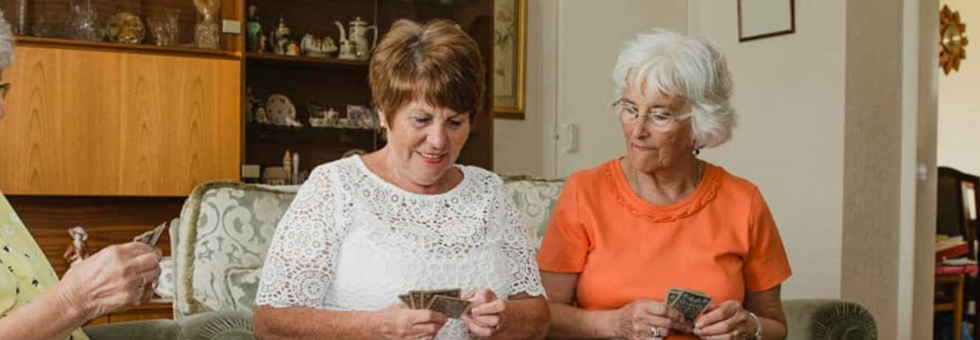Contents
This stage of the case study provides the following information.
- The Personal History sets out what is happening for Don and Madge.
- Values and Ethics – Relating to: Working with other professions; Strengths-based approaches
- Law and policy – Relating to: Discharge planning; Mental Capacity Act 2005
- Knowledge, Evidence and Good Practice – Relating to: Strokes; Impact of stroke on mental health; Best practice in stroke rehabilitation; Communication strategies; Involving the user in multi-disciplinary discharge planning;
- Skills – Relating to: Communication with a person affected by stroke; Risk assessment; Decision making capacity assessment; Effective working/collaboration with multi-disciplinary teams, wider systems and families; Advocacy in a hospital environment; Preferences – Advanced decisions, lasting power of attorney, and end-of-life care
- Activities – Relating to: Communication; Emotional impact; Enabling; Multi-disciplinary working
- Additional resources – Relating to: North American teaching materials; Supporting people who need urgent care or are at risk of hospitalisation
Personal History
Don was diagnosed as having had an ischaemic stroke. It was not possible to determine when it happened, so in light of this and his pre-existing conditions Don was deemed unsuitable for thrombolysis (information from the Stroke Association).
Following his stroke Don had muscle weakness and some paralysis and language difficulties (he could not form his words and found it difficult to follow conversations). After a full, multi-disciplinary assessment he began rehabilitation. He made some progress and was moved to a step down facility for reablement – based in a local care home.
Don was often tearful and upset and was described by the staff as ‘labile’. He slept badly and found it difficult to eat and to engage in activities geared to his recovery. He desperately wanted to be at home with Sprocket and where he felt closer to Madge. He feared being forced into a care home permanently and hated being in one, even for a short stay.
Although Don’s communication remained difficult, he made some progress in walking with a frame and was able to transfer from bed to chair and to a raised WC. At a multi-disciplinary meeting Don made it clear that he wanted to go home. The social worker worked with the Occupational Therapist to arrange additional care and to make adaptations to his house. The care included help to get up and to go to bed and support with personal care and meals. An emergency call system was fitted and grab rails in the bathroom and by the bed, which was moved downstairs. A commode was loaned to him for night-time use.
Karen returned to do cleaning and shopping, once a week, which Don paid for himself.
Values and Ethics
a) Working positively with a range of professional groups with their own value base and professional identity
Working across health and social care naturally brings together professionals with varied ideologies that can impact on joint working and decision-making (Dalley, 1991). Social workers in health settings may be vulnerable because there is a perception that social models and a strengths-based approach are naturally in conflict with the medical model and problem-based approach in health care. In addition, social workers value the patient as being at the heart of decision-making rather than as a passive recipient of treatment. These social approaches to care and support may be under threat in health-dominated environments and social workers may be undervalued as a result (Scragg, 2006; Carpenter, 2003). However, just as social work values must inform the work with Don, they should also impact on relationships with colleagues, especially in dealing with conflict should this arise.
‘Social workers should work effectively and confidently with fellow professionals in inter-agency, multi-disciplinary and inter- professional groups and demonstrate effective partnership working particularly in the context of health and social care integration’ (DH, 2015: 9).
b) Strengths based approaches
Embedded within the Care Act (2014), the strengths based approach draws on the strengths of individual, family and community systems to elicit positive outcomes. Whilst a strength-based approach may be advocated to minimise reliance on state support, this approach puts social work values into action by recognising the power of the individual and those around him/her to reach their full potential (Chapin et al., 2006). Thus it stimulates practice that looks beyond uni-dimensional explanations for health status and looks instead at the multiple influences that shape individual well-being. Strengths based approaches support person-centred practice by enabling individuals to take control and maintain their decision-making power (SCIE, 2015; Chapin et al., 2006).
In terms of work with Don, a strengths-based approach honours his individuality, his life skills, his current desires and his choices around care and support. Rather than focusing simply on his limitations as a result of his stroke, his strengths and resources would be identified and included in any assessment. This would enable thinking collaboratively with Don about how best to maximise those strengths and resources.
References
Carpenter, J., Schneider, J., Brandon, T. and Wooff, D. (2003) Working in multidisciplinary community mental health teams: the impact on social workers and health professionals of integrated mental health care. British Journal of Social Work, 33 (8), 1081−1103.
Chapin, R., Nelson-Becker, H., and MacMillan K. (2006) Strengths-based and solution-focused approaches to practice. In B. Berkman (Ed.), Social Work in Health and Aging. Oxford: Oxford University Press, 789-796.
Dalley G. (1991) Beliefs and behaviour: Professionals and the policy process. Journal of Ageing Studies, 5(2): 163-180.
Department of Health (DH) (2015) Knowledge and Skills Statement for Social Workers in Adult Services available at: https://www.gov.uk/government/uploads/system/uploads/attachment_data/file/411957/KSS.pdf
Social Care Institute for Excellence (2015) Strengths-based approaches for assessment and eligibility under the Care Act 2014. Available at: http://www.scie.org.uk/care-act-2014/assessment-and-eligibility/strengths-based-approach/
Scragg, T. (2006) An evaluation of integrated team management. Journal of Integrated Care, 14 (3), 39−48.
Law and Policy
a) Care Act 2014
In preparation for discharge home, the Care Act (2014) s9 and s27 continue to be relevant given Don’s changing needs, the changes made to the original care plan prior to hospitalisation and the requirement to review.
b) Mental Capacity Act 2005
Social workers and other health and social care practitioners have a duty to ensure that Don can participate in decision-making and make decisions for himself. The Mental Capacity Act (2005) is underpinned by core principles which must be considered when undertaking an assessment and planning support and care:
- Presumption of Capacity: Every adult has the right to make his or her own decisions and must be assumed to have capacity to do so unless it is proved otherwise. This means that you cannot assume that someone cannot make a decision for themselves just because they have a particular medical condition or disability.
Don had had a stroke, is having language difficulties and is emotionally labile, but this does not necessarily mean he cannot make decisions.
- Supporting individuals to make their own decisions: A person must be given all practicable help before anyone treats them as not being able to make their own decisions. This means you should make every effort to encourage and support people to make the decision for themselves. If lack of capacity is established, it is still important that you involve the person as far as possible in making decisions.
The multi-disciplinary team should make every effort to support Don to enable him to make decisions in relation to his return home. Efforts should include finding alternative ways to communicate if necessary and involving individuals from Don’s social network or other professionals who may have been involved in his care.
Don’s decisions are of varying degrees of importance – to go home (complex decision in light of his functional limitations), to continue to pay for Karen’s support (financial decision-making), other day-to-day living matters (minor decisions around home adaptations) potential care or decisions at end of life (major decisions about future care/support).
- People have the right to make unwise decisions: People have the right to make what others might regard as an unwise or eccentric decision. Everyone has their own values, beliefs and preferences which may not be the same as those of other people. You cannot treat them as lacking capacity for that reason.
Even though Don requires assistance with most activities associated with day to day living, risks are an inherent part of his return home. Despite this, Don’s preference is to return home to his companion, Sprocket, and to feel close to his late wife.
Although there is no obvious indications that Don lacks capacity to make decisions, if the social worker or another member of the team decide an assessment of capacity for decision-making is required, s2 and s3 of the Mental Capacity Act (2005) is relevant here. It is important to remember that the assessment should be completed before any final care plans are put in place, and the more important the decision, the more formal the mental capacity assessment should be.
Section 2
(1) For the purposes of this Act, a person lacks capacity in relation to a matter if at the material time he is unable to make a decision for himself in relation to the matter because of an impairment of, or a disturbance in the functioning of, the mind or brain.
(2) It does not matter whether the impairment or disturbance is permanent or temporary.
(3) A lack of capacity cannot be established merely by reference to—
(a) a person’s age or appearance, or
(b) a condition of his, or an aspect of his behaviour, which might lead others to make unjustified assumptions about his capacity.
(4) In proceedings under this Act or any other enactment, any question whether a person lacks capacity within the meaning of this Act must be decided on the balance of probabilities.
(5) No power which a person (“D”) may exercise under this Act—
(a) in relation to a person who lacks capacity, or
(b) where D reasonably thinks that a person lacks capacity,
is exercisable in relation to a person under 16.
(6) Subsection (5) is subject to section 18(3).
Section 3
(1) For the purposes of section 2, a person is unable to make a decision for himself if he is unable—
(a) to understand the information relevant to the decision,
(b) to retain that information,
(c) to use or weigh that information as part of the process of making the decision, or
(d) to communicate his decision (whether by talking, using sign language or any other means).
(2) A person is not to be regarded as unable to understand the information relevant to a decision if he is able to understand an explanation of it given to him in a way that is appropriate to his circumstances (using simple language, visual aids or any other means).
(3) The fact that a person is able to retain the information relevant to a decision for a short period only does not prevent him from being regarded as able to make the decision.
(4) The information relevant to a decision includes information about the reasonably foreseeable consequences of—
(a) deciding one way or another, or
(b) failing to make the decision.
The assessment of capacity is a functional test to determine if the individual has the capacity to make a particular decision. A formal written record of the assessment process should be kept.
- Does Don have an impairment of or disturbance in the functioning of the mind or brain which may affect his ability to make the decision in question?
- The person is unable to make their own decision if they cannot do one or more of the following:
- Understand the information given to them;
- Retain that information long enough to be able to make the decision;
- Weigh up the information available to make the decision; and
- Communicate their decision (by talking, sign language, or simple muscle movements).
Click here to read research about practice in best interest decision making under the Mental Capacity Act 2005
Knowledge, Evidence and Good Practice
a) Strokes
Approximately 110,000 people in England have a stroke each year. The brain injuries caused by a stroke are a major cause of physical and mental impairment in older people.
The NHS website has further information on the incidence, signs and symptoms of stroke.
Don has had an ischaemic stroke which is the most common type of stroke. These strokes are a result of atherosclerosis, or where fatty deposits (plaques) in the arteries cause blood clots to form. The clot prevents blood flow to the brain. Treatment usually involves different types of medications and rehabilitation to restore optimal functioning.
The Stroke Association has more information on risk factors, types of strokes and treatment.
As a result of the stroke Don is experiencing (1) muscle weakness and some paralysis, (2) language difficulties, and is (3) emotionally labile. According to Black-Shaffer and Winston (2004), there is no clear understanding of the relationship between age and outcomes following a stroke. However, we do know that the quality of life of older people can be significantly affected by:
- physical limitations (e.g. limited speaking ability, loss of coordination, diminished feeling in limbs)
- functional status (e.g. inability to bathe, dress or eat without assistance)
- loss of recreational activities (e.g. participation in cultural activities, difficulties talking to friends, problems using the telephone)
- depression
- fear (e.g. fear of falling, being a permanent burden, memory loss)
- perceived social support (e.g. negative relationship changes).
(Rizzo, 2006; Cox et al., 1998; Glass and Maddox, 1992).
Older people do make adjustments to compensate for the changes they are experiencing as a result of a stroke. Cox et al. (1998) document examples of older people finding alternative ways to accomplish tasks, learning to take a longer time to do things, organising oneself and using assistive devices. In terms of managing the psychological challenges, older people report taking responsibility for their mood, learning to accept a different life, and making sure they remain motivated on a daily basis.
Visit the NHS website to hear about how a stroke can affect an individual’s life.
The Stroke Association has a complete guide to cognitive problems after a stroke.
b) Impact of stroke on mental health
‘So Don is now coping with a stroke with depleted skills, with isolation, with worry about his future, with all the emotions going on inside him that he just isn’t coping with. And he is thinking how can I get out of this?’ (Heather)
Emotional changes following a devastating health crisis such as a stroke are common. Shock, denial, anger, frustration, grief or guilt are normal responses to this major event, according to the Stroke Association (2015). These emotional changes, however, may also be a consequence of what part of the brain has been affected by the stroke itself.
The Stroke Association has more to read about emotional changes after a stroke.
While anxiety or emotionalism (emotional lability) are not uncommon, depression is the most common psychological problem experienced by people who have had a stroke (Hackett et. al., 2005). Post stroke depression can also lead to other adverse outcomes such as longer hospitalisation, poor engagement with rehabilitation, impaired social functioning and increased risk of mortality (including suicide) (Visser-Meily et al., 2006; Turner-Stokes and Hassan, 2002; Stenager et al., 1998).
Identifying depression following a stroke may be difficult as some of the somatic features of depression are similar to the physical impairments due to the stroke itself (e.g. fatigue, sleeping difficulties, motor retardation). McCarthy et al. (2011) recommend that practitioners focus on the emotional aspects of depression rather than the somatic. This has clear relevance to Don’s case, as there is also the added complexity of loss associated with his recent major bereavement. Dafer and colleagues (2008: 19) suggest six core features of post stroke depression: (1) persistent sadness; (2) feelings of hopelessness, helplessness and worthlessness; (3) guilt and sense of being a burden; (4) lack of motivation; (5) loss of interest in surroundings and activities previously enjoyed; and (6) death wishes and suicidal ideations.
McCarthy et al. (2011) argue that post stroke depression is often ignored given the emphasis on physical rehabilitation and organisation of post discharge care and an assumption that it is transient in nature and will improve as the person physically recovers. They recommend a structured clinical interview by a social worker as a screen for depression. This should include the use of an assessment tool, such as the Beck Depression Inventory or the Patient Health Questionnaire – 9, and the collection of information from collateral sources.
Try the Patient Health Questionnaire – 9.
c) Best practice in stroke rehabilitation
The NICE guidelines Stroke Rehabilitation in Adults (2013) reinforce the importance of a full social care assessment prior to discharge home to include some of the following which are relevant in Don’s case:
- Ongoing social care needs including access to benefits, care, housing, community participation, transport, access to voluntary services, leisure
- Ensuring a safe and enabling home environment
- Cognitive and emotional (e.g. depression or anxiety) assessment
- Goals for further rehabilitation upon discharge
- Speech therapy and/or communication aids
- Mobility and transfers, walking therapy (ongoing Occupational Therapy and Physiotherapy involvement)
NICE has further guidance online.
‘And communication between the services is so important, so that everybody knows where they are and what’s happening in their areas.’ (Mike)
d) Communication strategies
Excellent communication strategies are at the core of good social work practice. Guidelines to enhance good communication may be helpful and some are specific to Don’s limitations as a result of his stroke (his difficulties with forming words and following conversations).
The Gerontological Society of America (GSA) (2012) outlines several evidence-informed tips to improve communication with all older people some of which are relevant here:
- Improving Interactions with Older People
- Recognise the tendency to stereotype older people, then conduct your own assessment.
- Avoid speech that might be seen as patronising to an older person (sometimes referred to as “elderspeak”).
- Improving Face-to-Face Communication with Older People
- Monitor and control your nonverbal behavior.
- Minimise background noise.
- Face older people when you speak with them, with your lips at the same level as theirs.
- Pay close attention to sentence structure when conveying critical information.
- Use visual aids such as pictures and diagrams to help clarify and reinforce comprehension of key points.
- Ask open-ended questions and genuinely listen.
- Optimizing Interactions for Health Care Professionals
- Express understanding and compassion to help older patients manage fear and uncertainty related to the ageing process and chronic diseases.
- Ask questions about an older patient’s living situation and social contacts.
- Customise care by seeking information about older peoples’ cultural beliefs and values pertaining to illness and death.
- Engage in shared decision making.
- Strike an appropriate balance between respecting patients’ autonomy and stimulating their active participation in health care.
- Avoid ageist assumptions when providing information and recommendations about preventive care.
- Use direct, concrete, actionable language when talking to older people.
- Verify listener comprehension during a conversation.
- Set specific goals for listener comprehension.
- Incorporate both technical knowledge and emotional appeal when discussing treatment/intervention regimens with older patients.
- Use humor and a direct communication style with caution when interacting with older patients from non-Western cultures.
A range of communication problems can be a result of a stroke. See information from The Stroke Association on communication problems after stroke.
It appears that Don has mild expressive aphasia (i.e. difficulty expressing what he wants to say) and mild receptive aphasia (i.e. difficulty following conversations).
Go to Feb. – May 2019 of the Case Study for information about different types of aphasia and helpful tips for communicating with someone with aphasia.
e) Involving the service user in multi-disciplinary discharge planning
The importance of engaging service users/patients and carers in care planning to ensure person centred care and successful discharge from hospital is confirmed in the NICE guidelines Transition between inpatient hospital settings and community or care home settings for adults with social care needs (NG 27) (2015).
The Guidelines include overarching principles for care and support during a transition. A checklist, informed by these guidelines, may help the social worker prepare for Don’s discharge and ensure that he is treated individually (person-centred care), with dignity and continues to be an active partner in all decision-making processes (communication and information sharing):
- Who is the central point of contact for Don?
- Have all assessment outcomes been shared with Don?
- Has a discharge summary been prepared and a copy given to Don?
- Has any other relevant information or contact details been given to Don?
- Has the multi-disciplinary team communicated between one another and agreed the discharge plan? Recorded this plan?
- Are any further assessments required upon discharge (e.g. Don’s mental health)?
References
Black-Schaffer, R.M. and Winston, C. (2004) Age and functional outcome after stroke, Topics in Stroke Rehabilitation, 11(2): 23- 32.
Cox, E.O., Dooley, A., Liston, M. and Miller, M. (1998) Coping with Stroke: Perceptions of Elderly Who Have Experienced Stroke and Rehabilitation Interventions, Topics in Stroke Rehabilitation, 4(4): 76-88.
Dafer, R. M., Rao, M., Shareef, A., and Sharma, A. (2008) Poststroke depression, Topics in Stroke Rehabilitation, 15: 13-21.
Gerontological Society of America (2012) Communicating with Older Adults: An Evidence-based Review of What Really Works. Washington DC: GSA
Note: while this resource can be viewed freely online, the PDF version is a chargeable resource.
Glass, T.A. and Maddox, G.L. (1992). The quality and quantity of social support: Stroke recovery as psycho-social transition, Social Science and Medicine, 34: 1249-1261.
Hackett, M. L., Yapa, C., Parag, V., and Anderson, C. S. (2005) Frequency of depression after stroke: A systematic review of observational studies, Stroke, 36: 1330–1340.
Harwood, J. (2007) Understanding Communication and Aging, London: Sage Publications.
McCarthy, M.J., Powers L.E., and Lyons, K.S. (2011) Poststroke depression: Social workers’ role in addressing an unrecognised psychological problem for couples who have experienced a stroke, Health & Social Work, 36 (2): 139-148.
Rizzo, V. (2006) Social work support services for stroke patients: Interventions and outcomes. Social Work in Health Care, 43 (1):33-56.
Stenager, E. N., Madsen, C., Stenager, E., and Boldsen, J. (1998) Suicide in patients with stroke: Epidemiological study, British Medical Journal, 316, 1206–1210.
Stroke Association (2015) A Complete Guide to Emotional Changes after Stroke.
Turner-Stokes, L., and Hassan, N. (2002) Depression after stroke: A review of the evidence base to inform the development of an integrated care pathway, part 1: Diagnosis, frequency and impact, Clinical Rehabilitation, 16, 231–247.
Visser-Meily, A., Post, M., Gorter, J. W., Berlekom, S.B.V., Van Den Bos, T., and Lindeman, E. (2006) Rehabilitation of stroke patients needs a family centered approach, Disability and Rehabilitation, 28, 1557–1561.
Skills
a) Communication skills with a person affected by stroke
Communication skills are key in working with someone who has had a stroke, so it is worthwhile to expand on a few of these in relation to working with Don. Highlighting the risk of post-stroke depression McCarthy and colleagues (2011) recommend that:
“In general, social workers need to draw on skills such as active listening, observations of verbal and nonverbal behaviors, reflection, and exploration of individuals’ distress through open-ended questioning” (p. 143).
Some tips that would be useful if you were talking with Don:
- Ask open-ended questions and genuinely listen.
During assessment or follow-up meetings with Don, it will be important to maximise the use of open ended questions:
The nurses tell me that you are not sleeping or eating well.
*How is your sleeping?
The nurses tell me that you were tearful yesterday.
*How have you been feeling over the last few days?
Listening will mean focusing on Don and giving him time to respond to your questions. It may be necessary to shut the door or find a quiet space if there is too much noise around him. Maintain eye contact and attend to his body language. To be sure he knows you understand him ask further questions, paraphrase or use body language (e.g. nodding your head).
Remember, it will be as important to listen to Don’s feelings as to his specific statements about his care needs.
- Keep your language clear, simple and positively framed.
There is extensive research literature to demonstrate that older people have a difficult time processing sentences that include several clauses (Harwood, 2007). Each clause requires the person to recall different pieces of information at once. Therefore, it is better to use several sentences each containing one piece of information.
In Don’s situation think about the following options:
I have spoken with the OT who confirmed that you are making good progress with your walking using a zimmer frame so when you are discharged home in a few days it will be important that you continue to use the frame until you are more stable and able to mobilise without it.
*I have spoken with the OT. She states you are making good progress with your walking. When you go home it will be important to continue to use the zimmer frame. She expects that you will need it until you feel confident to walk without it.
Be either concrete – communicating observable and tangible objects or actions – or abstract – communicating intangible concepts or ideas. Using language that is clear, direct and has precise meaning is recommended because it requires fewer cognitive resources to process and thus the message is understood (GSA, 2012).
- To help Don understand the support that will be in place when he goes home have a written list or discharge summary with you.
You might also refer to any equipment he has used in rehabilitation. Consider taking along a sample emergency call button with you so he sees it and understands how it works. Good practice suggests that more than one meeting with Don may be necessary to ensure he fully understands the various agreed plans for his discharge.
Finally, while it is important to convey messages that are both practical and realistic it is also important to deliver information (verbal and written) positively. Research suggests that people are more likely to remember information associated with positive feelings or attributes (Carstensen et al., 1999).
The Stroke Association’s booklet on helping someone with communication problems is an extremely useful resource.
b) Risk assessment skills
Now on his own and in declining health, Don is facing an increased level of risk. Holistic social work assessment includes specific attention to risks.
“The aim of risk assessment is to consider a situation, event or decision and identify where risks fall on the dimensions of ‘likely or unlikely’ and ‘harmful or beneficial’. The aim of risk management is to devise strategies that will help move risk from the likely and harmful category to the unlikely or beneficial categories.” (Whittington, 2007: 22).
Despite many social workers being risk adverse, a review of the risk assessment literature by Barry (2007) suggests that older people need to be supported to take risks. Indeed, personalised approaches to care and support promote independence, choice, control and self-determination.
Risk assessments and risk enablement involves partnership working, careful planning and the use of effective communication skills in order to understand the person who is making decisions about his/her life and their views (Carr, 2010; Barry, 2007; Stalker, 2003):
- What does Don want?
- Why does Don want it?
- What are Don’s abilities/strengths?
- What risk factors need to be taken account of?
- What strategies are available to remove or minimise any risks?
Go to Dec. 2018 – Jan. 2019 of the Case Study to find out more about skills for risk assessment.
c) Decision making capacity assessment skills
Don’s decision-making around his care and support needs to be considered in relation to the core principles of the Mental Capacity Act (2005). In the context of hospital discharge planning, it is extremely important that social workers use a wide range of skills to ensure that older people with high support needs can both demonstrate decision making capacity and participate in decisions about their future.
Go to the Law and Policy section to find out more about assessing mental capacity.
d) Effective working/collaboration with multi-disciplinary teams, wider systems and families
Effective collaboration with or within multi-disciplinary teams and wider community systems is critically dependent on identifying joint approaches to managing complexity. Knowledge from one single source is not sufficient to find the solution to the kinds of problems that Don is currently experiencing and likely to experience in the future. According to Cameron et al. (2012), the research evidence on what works to promote joint or integrated working is not sufficiently robust. According to Cameron et al. (2012) and others (e.g. Hudson, 2002; Freeth, 2001) there are a number of factors that can hinder effective collaboration across professionals or systems. These include: contextual factors (e.g. resource constraints); organisational factors (e.g. flexibility in relation to work roles); cultural factors (e.g. organisational culture on the way things are done); professional factors (e.g. differing values); and personal factors (e.g. individual approaches to working relationships).
The research does, however, provide some indication on what promotes effective working (Cameron et al., 2012):
- All professionals have shared understandings of roles and responsibilities, and organisational policies and protocols underpinning services;
- Flexibility in relation to work roles;
- Effective communication, including informal and open communication as appropriate;
- Effective mechanisms for information sharing;
- Co-location where possible;
- Strong management support for collaborative models of working; and
- Regular team meetings or team building opportunities to address professional cultures, build trust and rapport.
e) Advocacy in a hospital environment
If Don does not understand his treatment, rehabilitation or discharge plans an advocate may need to become involve to help him process information and assist him with independent decision-making. The social worker might want to engage Charlie to assist his uncle to ensure a person-centred approach is maintained. Or, if Charlie is not available to do this, it may be necessary to bring in an independent advocate under s. 67 of the Care Act (2014).
f) Preferences – Advanced decisions, lasting power of attorney, and end-of-life care
‘I think in actual fact, some emphasis could be put upon encouraging people to appoint power of attorney because it does make such a huge difference, because if they’re going to start from scratch when you suddenly lose the ability, which any of us could by having a stroke, of managing your financial affairs, if it’s in place then it’s just a matter of a phone call to authorise it, then that’s fantastic, that is, but at the same time, people should have the opportunity to be counselled and advised that there are other things that they ought to be looking at which can include advanced decisions and preferences at end of life.’ (Janet)
Although there is no indication that Don is dying, he may welcome a conversation with the social worker to think about and discuss end of life care in the future. Advanced care planning will simply permit Don to express his wishes so everyone is aware of decisions he has made about treatment and care. It also permits him an opportunity to appoint a lasting power of attorney should he be unable to make his own decisions in the future. Finally, he may also want to draw up or update a will.
The National Council for Palliative Care has published Planning for Your Future Care: A Guide.
There is more about end of life issues in Oct. 2016 – April 2017 and July 2019.
See Dec. 2018 – Jan. 2019 to find out more about Lasting Power of Attorney.
References
Barry, M. (2007) Effective Approaches to Risk Assessment in Social Work: An International Literature Review. Edinburgh: Education Information and Analytical Services, Scottish Executive.
Cameron, A, Lart, R, Bostock, L and Coomber, C (2012) Research briefing 41: Factors that promote and hinder joint and integrated working between health and social care services. London: SCIE.
Carr, S. (2010) Enabling risk, ensuring safety: self-directed support and personal budgets. London: Social Care Institute for Excellence.
Carstensen, L.L., Isaacowitz, D., Charles, S.T. (1999) Taking time seriously: a theory of socioemotional selectivity. Am Psychol., 54, 165-81.
Freeth D. (2001) Sustaining interprofessional collaboration. Journal of Interprofessional Care, 15(1), 37-191.
Gerontological Society of America (2012) Communicating with Older Adults: An Evidence-based Review of What Really Works. Washington DC: GSA
Note: while this resource can be viewed freely online, the PDF version is a chargeable resource.
Harwood J. (2007) Understanding Communication and Aging. Thousand Oaks, CA: Sage Publications.
Hudson B. (2002) Interprofessionality in health and social care: The Achillies’ heel of partnership? Journal of Interprofessional Care, 16(1), 7-17.
McCarthy, M.J., Powers L.E., and Lyons, K.S. (2011) Poststroke depression: Social workers’ role in addressing an unrecognised psychological problem for couples who have experienced a stroke. Health & Social Work, 36 (2), 139-148.
Stalker, K. (2003) Managing risk and uncertainty in social work: A literature review, Journal of Social Work, 3 (2), 211-233.
Whittington, C. (2007) Assessment in Social Work: A Guide for Learning and Teaching. London: Social Care Institute for Excellence.
Activities
Communication
Both the Mental Capacity Act 2005 and the Care Act 2014 highlight the importance of recognising the expertise that a person being assessed is likely to have about their situation. Both Acts also highlight the importance of finding ways to support and encourage the person’s participation in assessment and decisions about care and support needs.
- What kinds of social work skills and approaches could you use to support Don to communicate his wishes and preferences? To help your thinking, see a short film produced by the Stroke Association.
- How confident are you in using, for example, communication resources such as those suggested by the Stroke Association? If you have not had the opportunity to explore these resources go there now and consider:
- How they could be used to support a person that you have worked with who has communication difficulties following stroke
- How you could begin to incorporate their use into your practice
- How you would evaluate their impact
Note down your ideas.
Emotional impact
- What are the potential emotional implications for a person who has had a stroke?
- How might the emotional impact of a stroke complicate Don’s grief following the death of his wife, Madge?
Enabling
Don has speech and language difficulties following his stroke. Think about your approach to communicating with Don and enabling him to make decisions about his care and support needs. How would you approach communicating the following information to Don in a way that is clear and allows Don to revisit arrangements and ask questions about them:
‘The bed will be brought downstairs so that you don’t have to manage the stairs and a commode will be delivered which can go in your new bedroom.
Multi-disciplinary working
How would you explain the social work role, its value and its contribution, to a multi disciplinary team predominantly made up of health care professionals?
Additional Resources
Many useful resources for social work practice with older people have been developed in North America for example:
- For teaching modules on various topics including Technology and Ageing and Social Work Practice and Competency with Lesbian, Gay, Bisexual, and Transgender Older Adults see the Council on Social Work Education – National Centre for Gerontological Social Work Education.
- Boston University School of Social Work, Center for Aging & Disability Education and Research has produced a range of training videos and facilitator guides on working with older adults (for purchase) at: http://www.bu.edu/cader/
Additional resources added in 2019:
- Improving urgent health care for older people.
- Personalised integrated care.
- Enabling social engagement for older people.












